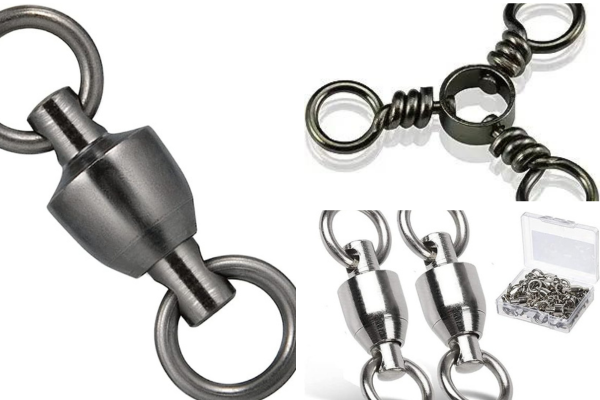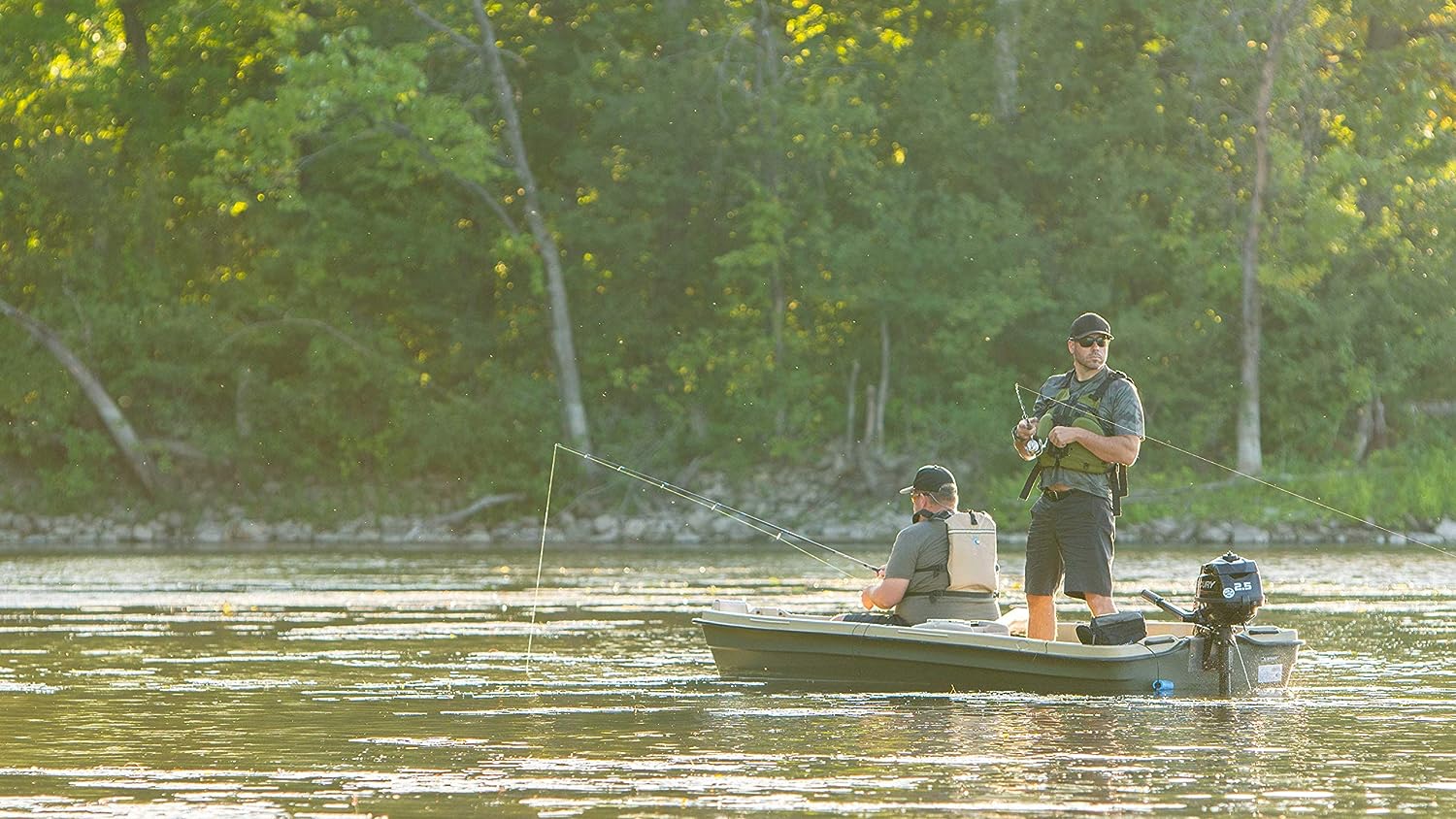For beginners, bass fishing can seem intimidating and overwhelming. But the good news is, getting started is fairly easy. While there is a little learning curve, overcoming it can be highly rewarding. The goal of this post is to cover the basics of bass fishing setup and help you master the most essential techniques. Keep reading!
Bass Fishing Setup – Where and How?
It should be your first consideration. You have to decide where you are going to fish for bass. Most people start by fishing from a dock or shore. If you have access to a small boat or kayak, it is even better. But if you do not have access to them, do not worry. There are other great options.
Bass Fishing From Shore
Fishing from shore can be highly enjoyable. You do not need many things to get started. You are going to need some tackle, and your rod and reel. Look for bridge overpasses, boat ramps, and parks. Bank fishing will teach you some useful techniques that will help you with your future fishing trips.
Bass Fishing From a Dock
Fishing from a dock is not radically different from fishing from shore. When you fish from the dock, you will be far from the bank, which will increase your chances of catching fish. Try to find places with aquatic plants, edges, and clumps.
If there are other docks nearby, you can use a Senko cast under other docks. When you do it, be courteous and polite to your neighboring docks. Casting under a dock requires some practice and this practice is as important as your bass fishing setup.
Bass Fishing From Kayak
With a small fishing boat or Kayak, you have more fishing options. You will no longer be limited to a small place. However, for a beginner, it is good to stay near the shore and keep things simple.
Rod and Reel
First, you will have to invest in a rod and reel. As a beginner, you can start with one high-quality spinning rod and reel. And as you gather experience, you can buy more combos. When you become an experienced angler, you can get a baitcasting rod and reel for more versatility.
Experienced anglers recommend some brands more often than others. Highly recommended brands include Abu Garcia, Shimano, Fenwick, and Pflueger. However, many other brands manufacture pretty good rods and reels.
Spinning rod and reel combos are known for their great versatility. And you can cast them with many different types of bass lures. For easy casting, 6′-6″ MH Fast Action is one of the best spinning rods.
Pflueger President, Abu Garcia Orra2 S, and Shimano Sahara are some of the best bass fishing spinning reels. Consider adding a reel from any of these brands to your bass fishing setup.
If you have some experience using a spinning rod and reel, you can start using a baitcasting rod and reel. A baitcasting combo allows you to use a heavier line and cast heavier lures. A quality graphite rod and a good baitcasting reel can help you fight a strong, fighting fish.
However, with a baitcaster, there is a little learning curve. To get used to it, you can cast it in your backyard for some days.
Fenwick HMG Casting Rods, St. Croix Mojo Bass Casting Rods, and Abu Garcia Veracity Casting Rods are some high-quality baitcasting rods for bass.
The best baitcasting reels include Abu Garcia Revo S, Shimano Citica, and Pflueger Supreme.
Fishing Line for Bass
For your success in bass fishing, choosing the right fishing line is of utmost importance. Your fishing experience directly depends on the fishing line you are using. Without the right fishing line, your bass fishing setup is incomplete. Let’s take a look at the three main options:
Monofilament
Monofilament is basically a single nylon fiber, and it is a classic line option. It is easy to work with, and pretty inexpensive. For beginner anglers, monofilament is great partly because it is very easy to tie and cast.
The monofilament line has some stretch, which is really good especially when using reaction baits. The diameter of a monofilament line determines how much hookset it can withstand.
Braid
Brass fishermen also use braided fishing line, which is known for its strong profile and zero stretches. This fishing line is more sensitive to bites. This line is also a bit abrasive, which means it can cut through soft weed. Another thing about braid is that it is more easily visible in the water. This fishing line is often used in places where there is dense vegetation.
Fluorocarbon
Fluorocarbon is another line option for bass fishermen. This line offers some abrasion resistance and a little stretch. When submerged in water, the fluorocarbon line becomes almost invisible. This invisibility is an advantage when catching bass.
Unlike monofilament, fluorocarbon sinks, which can be great for reaction baits and soft plastics. When you are using braided lines, you can use fluorocarbon as a leader and take advantage of both.
Hooks and Weights
Complete your bass fishing setup with the right hooks and weights. Bass hooks are available in dozens of styles, and you may feel a bit overwhelmed with so many options. For a beginner who is going to use soft plastic baits, Offset EWG and Offset Wide Bend are the best hooks for bass fishing.
The Offset Wide Bend can be used on Texas rigged worms. For plastics, some people like EWG hooks. As a new angler, you will like an Offset Wide Bend.
For Fluke or Senko style jerk bait and other weightless applications, you will find the Offset EWG hook pretty convenient. You will get better hookups with this hook.
Bass Fishing Setup – Tying a Fishing Knot
This is an essential skill for an angler. No matter how complete your bass fishing setup is, you are not a real angler until you know how to tie a fishing knot. There are many types of fishing knots. We will now focus on the 2 knots used for bass fishing.
Palomar knot
Palomar knot is a mystery for most beginners. When people first try fishing, they do not usually learn how to tie this knot. For bass fishing, this is the strongest, fastest, and easiest knot. It works with fluorocarbon, monofilament, and braided lines. There are YouTube videos that show the correct way to tie the Palomar knot.
Alberto knot
The Alberto knot is used to connect different lines. This is why this knot is known as a money-saving knot. You can use a monofilament mainline and connect a leader of an expensive line to it.
To replace the line, you do not have to replace the whole thing. You can get things done by just replacing the partial spool of line or the leader length.
Best Bass Lures
There are a bunch of lures used for bass fishing. We recommend multiple types of bass lures for your bass fishing setup. Let’s get familiar with them.
Texas rig
Of all bass fishing rigs, this is the most basic one. You can easily tie a worm hook to this rig. On a Texas rig, you can use any type of plastic rig. However, a worm is the most common bait. With its curl tail, a bass worm can be easily tied on a Texas Rig. Straight tail worms like Senko and the Trick Worm are also used.
Senko
For beginners, the Senko is an amazing bass lure. You can easily tie a 5” worm to it. Bass loves the rig when it slowly dips through the water. The Senko should be cast to a visible piece of cover. Compared to the Texas rig, this rig is a bit less weedless.
Buzzbait/Toad
A topwater toad and buzz bait are very different types of baits, but they offer a similar presentation. They are great on wood, grass, and rock. These lures easily draw bass attention.
Buzzbaits make a squeaking noise in the water and churn up bubbles. Some are like spinnerbaits and others are tipped with soft plastics. You can rig a toad the way you rig soft plastic bait. To make sure that the toad stays on the water surface, you have to reel it in pretty fast.
Spinnerbait/ Swim jig
Using these lures is very easy. Just cast them out and use your rod tip to work the bait. Let it hover over the bottom and reel it in slowly. You can use the swim jig in heavier vegetation because it is more compact.
Apart from the ones mentioned above, there are also some advanced bass lures such as:
- Hollow Body Frog
- Bladed Swim Jig
- Drop Shot
- Carolina Rig
- Swimbaits
- Topwater Plugs
- Squarebill Crankbaits
- Deep Diving Crankbaits
Bass Fishing Setup – Tackle Storage and Accessories
If this is the first time you are going to fish for bass, you probably do not need a tackle box. Instead, get a Plano style box or a tackle backpack. A fishing backpack is a lot easier to carry. It is also versatile. Live or soft plastics can be kept in the side pockets.
To complete your bass fishing setup, get the following fishing accessories:
- To remove embedded hooks, get a set of fishing pliers.
- Get a set of fabric scissors to cut your line.
- You may want to weigh your fish. For this, get a digital fishing scale.
- To reduce strain on eyes, get sunglasses.
You could also read about the tuna fishing line setup.
Bass Fishing Setup – Conclusion
For a novice angler, the idea of bass fishing can be overwhelming, but mastering the techniques can be highly rewarding. You will be more confident if you are equipped with the right gear and accessories. We have discussed different aspects of bass fishing setup, and we hope you will make informed decisions.
Share the Love
If you found this post useful, please let others know about it by sharing it.
Related Posts
If you found this post useful, please explore others posts.


